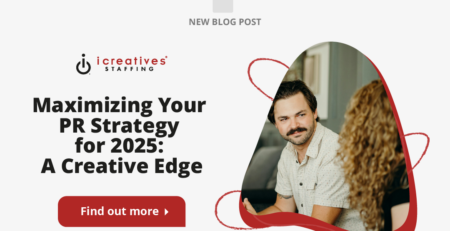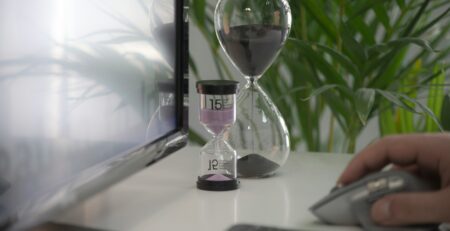The Importance of Rest for Sustaining Creativity
Rest is not merely a physical necessity; it is a vital component of the creative process. In today’s fast-paced world, the pressure to continuously produce innovative ideas can lead to burnout, making rest an essential yet often overlooked element in maintaining creative vigor. Understanding the relationship between rest and creativity is crucial for anyone looking to enhance their creative output.
Firstly, rest facilitates cognitive functions that are fundamental to creativity. This includes memory consolidation, problem-solving abilities, and the synthesis of new ideas. When we allow ourselves to step away from work, we give our brains the opportunity to sort through and connect disparate pieces of information gathered throughout the day.
Secondly, rest can significantly boost mood and well-being, which are closely linked to creative thinking. Stress and exhaustion can narrow our cognitive focus due to the brain’s survival mechanisms, which is counterproductive when trying to generate creative solutions. In contrast, a well-rested mind is more capable of expansive thinking and risk-taking, which are key components of creativity.
Moreover, strategic rest, such as planned breaks during work sessions or designated downtime, can prevent creative blocks and foster sustained productivity. Techniques like the Pomodoro Technique or mindfulness breaks can help in maintaining a steady flow of creativity without leading to mental fatigue.
Additionally, the role of sleep cannot be understated in the creative process. Sleep not only restores the body but also enhances neural connections that lead to imaginative and unconventional ideas. Dreams themselves can be a source of creative inspiration, as many artists and scientists report solving complex problems or gaining insight into their work through dreams.
Finally, embracing a culture that values rest, within workplaces and educational environments, can cultivate a more sustainable and innovative output. Encouraging rest and recognizing its role in creativity can lead to healthier, more creative individuals and communities.
How does rest enhance creative thinking?
Rest plays a pivotal role in enhancing creative thinking by allowing the brain to engage in diffuse mode thinking—a state where it can freely make connections between seemingly unrelated concepts. This is in contrast to the focused mode of thinking that dominates during active work periods. When the brain is at rest, it can wander and explore, leading to the emergence of new ideas and solutions that wouldn’t surface under the strain of focused thinking.
Neuroscientific research supports this by showing that during rest, the brain’s default mode network (DMN) becomes active. The DMN is involved in daydreaming, envisioning the future, and retrieving memories—all crucial for creative thinking. This neural activity suggests that rest is not a time of inactivity but rather a vibrant period of subconscious exploration.
Psychologically, rest can reduce the barriers of the inner critic—the voice that often inhibits creative expression. A relaxed state can foster an environment where experimental and innovative thoughts are welcomed rather than judged prematurely. This psychological safety is essential for creative risk-taking.
Moreover, rest can help in resetting one’s emotional landscape, clearing away the frustrations and disappointments that might cloud creative thinking. Emotional resilience, bolstered by adequate rest, allows for a more playful and curious approach to creative work, which is often needed to break away from conventional patterns of thinking.
Strategically incorporating rest into the creative process can also prevent burnout. Regular breaks, leisure activities, and a good night’s sleep are all restful practices that can sustain long-term creativity. For instance, companies like Google have famously implemented policies like the 20% time rule, where employees are encouraged to spend 20% of their work time on side projects, which often leads to innovative ideas and solutions.
In practice, integrating rest can be as simple as taking short walks after intensive work periods, practicing meditation, or engaging in hobbies that relax the mind. These activities not only clear the mental clutter but also provide a fresh perspective when returning to creative tasks.
What are the signs of insufficient rest affecting creativity?
Recognizing the signs of insufficient rest is crucial for maintaining an optimal level of creativity. One of the most apparent signs is a decrease in problem-solving abilities. When you’re not well-rested, the brain struggles to make connections and come up with innovative solutions, often resulting in a reliance on clichés or tried-and-tested methods instead of novel ideas.
Mental fatigue is another significant indicator. This can manifest as difficulty concentrating, forgetfulness, or a lack of motivation. When creative tasks that once sparked excitement start to feel burdensome, it’s often a sign that the brain needs a break.
Emotional instability can also be a symptom of lack of rest. Irritability, mood swings, or an unusually pessimistic outlook on work can all hinder the creative process. Creativity thrives in a positive emotional environment, and without rest, maintaining such an environment becomes challenging.
Physical symptoms such as headaches, eye strain, or general lethargy can also indicate insufficient rest. These symptoms can distract from the focus and mental clarity needed for creative work.
Finally, a reduction in the quality of output or an increase in errors can be a clear sign that rest is needed. When the brain is overworked, it’s less capable of detailed and careful work, leading to mistakes and a drop in the overall quality of creative projects.
Addressing these signs by taking appropriate rest can rejuvenate the mind and body, leading to a more productive and creatively fulfilling work process. For example, implementing regular rest breaks during long projects can help maintain high levels of creativity and prevent the negative effects of overwork.

Can regular breaks increase creativity?
Regular breaks are not just beneficial; they are a strategic tool for enhancing creativity. The idea of taking regular breaks, such as the Pomodoro Technique, where work is segmented into periods of focus followed by short breaks, has gained popularity precisely because it aligns with how our brains function optimally.
During short breaks, the cognitive load is lifted, allowing the brain to shift gears from focused to diffuse thinking. This shift can lead to ‘aha’ moments, where sudden insights or solutions to problems appear seemingly out of nowhere. These moments are crucial for creative breakthroughs and can often occur when we step away from our desks for a brief period.
Moreover, regular breaks can help maintain a high level of energy and prevent fatigue, which is essential for sustained creative work. Energy management is as crucial as time management when it comes to creativity, and breaks play a vital role in managing one’s energy effectively.
Breaks also provide opportunities for engaging with different environments or activities that can inspire new ideas. For instance, a walk outside during a break can expose you to new stimuli—sights, sounds, and interactions—that can spark creative thinking.
Incorporating regular breaks into the work routine can also enhance focus during work periods. Knowing that a break is coming up can help maintain concentration and effort, as the mind is less likely to feel overwhelmed by the prospect of long, uninterrupted work periods.
For creative professionals, experimenting with the length and type of breaks can also be beneficial. Some might find that longer breaks for physical activity bring the best creative resurgence, while others might benefit from short, meditative breaks. Personalizing break strategies to fit one’s creative style and workload can optimize their effectiveness.
How does sleep impact creativity?
Sleep is perhaps the most profound form of rest, deeply impacting our creative capabilities. During sleep, especially during the rapid eye movement (REM) phase, the brain processes and synthesizes information and experiences from the day. This phase is crucial for forming connections between disparate ideas, a core component of creativity.
Research has shown that sleep facilitates the reorganization of memories, which can lead to more creative problem-solving. In experiments where individuals were asked to solve complex problems, those who had a night of sleep between learning the problem and solving it performed significantly better than those who attempted to solve it the same day.
Sleep also plays a role in emotional regulation. A well-rested mind is more capable of positive thinking and resilience, which are conducive to creative risk-taking and experimentation. Conversely, sleep deprivation can lead to negative thinking patterns that stifle creativity.
Dreams themselves can be a direct source of creative inspiration. Many artists and scientists, including the likes of Salvador Dali and Dmitri Mendeleev, have credited dreams with providing them insights or ideas that contributed to their work.
Moreover, sleep contributes to neuroplasticity—the brain’s ability to reorganize itself by forming new neural connections. This plasticity is not only essential for learning new skills but also for developing innovative approaches to problems.
Ensuring quality sleep is therefore not just about physical health but is directly linked to cognitive and creative performance. Practices such as maintaining a regular sleep schedule, creating a restful bedtime routine, and ensuring a sleep-conducive environment can enhance the quality of sleep and, by extension, creativity.
What strategies can help integrate rest into a busy schedule?
Integrating rest into a busy schedule may seem daunting, but with strategic planning, it is entirely feasible. One effective approach is time blocking, where specific times are designated for rest, much like meetings or work tasks. This ensures that rest is prioritized and not overlooked amid a busy schedule.
Another strategy is to leverage technology to remind us to take breaks. Numerous apps can help manage time and suggest optimal times for rest based on user input about their schedule and lifestyle.
Setting boundaries is also crucial. In the digital age, it’s easy to remain perpetually connected to work through devices. Setting clear boundaries, such as ‘no email’ periods during evenings or weekends, can help ensure that rest periods are respected.
For those who find it difficult to disconnect completely, engaging in restful activities that are still productive—such as reading, light gardening, or gentle yoga—can provide a compromise that feels restorative without the guilt of being unproductive.
Lastly, it’s important to communicate the importance of rest to peers, family, and employers. When others understand the value of rest, they can support your rest periods, reducing potential conflicts or misunderstandings about availability and work pace.
Benefits of Structured Rest in a Home Office
Incorporating structured rest periods within the home office routine can lead to numerous benefits. Scheduled breaks can prevent mental fatigue, boost creativity, and reduce the risk of physical strain from prolonged periods of sitting or staring at a computer screen. For example, the Pomodoro Technique, which involves working for 25 minutes followed by a 5-minute break, can be particularly effective in maintaining high levels of productivity and focus throughout the day.
Additionally, structured rest can help in managing work-life balance, which is often a challenge in a home office setting. By clearly defining times for work and rest, you can create a more disciplined approach to your day, ensuring that both work and relaxation time are respected and optimized.
Challenges of Resting in a Home Office
One of the main challenges of resting in a home office is the temptation to always be ‘on.’ The proximity to your work setup can make it tempting to extend work hours or to return to work during designated rest periods. This can lead to a cycle of overwork and insufficient rest, which is detrimental to both productivity and health.
Another challenge is the potential for interruptions and distractions. Home environments are not always conducive to rest, especially if shared with others who may have different schedules or demands. Finding ways to communicate and negotiate shared space use is crucial for ensuring that rest periods are effective and rejuvenating.
Strategies for Effective Rest in a Home Office
To overcome these challenges, several strategies can be employed. First, creating a physical distinction between work and rest areas can help. If space allows, designate a specific area for breaks away from your work desk. This could be a different room or a specific chair that signals to your brain that it is time to relax.
Setting and adhering to a work schedule is also vital. Define clear start and end times for your workday and stick to them as much as possible. Use alarms or app reminders to signal the beginning and end of rest periods. This helps in maintaining a routine and prevents overwork.
Engaging in restful activities that you enjoy and that are different from your work tasks can also enhance the quality of your breaks. Whether it’s reading, practicing yoga, or simply stepping outside for fresh air, choose activities that mentally and physically distance you from work.
Tools and Resources to Aid Rest in a Home Office
Several tools and resources can support effective rest in a home office. Apps that promote meditation, mindfulness, or even provide ambient sounds can create a restful atmosphere. Additionally, using productivity apps to schedule and time your work and break periods can keep you accountable to your rest schedule.
Investing in comfortable and ergonomic furniture can also enhance rest periods. Ergonomic chairs and desks that promote good posture can reduce physical strain, making your rest periods more effective in relieving any tension or fatigue.
Resting effectively in a home office is essential for maintaining productivity, creativity, and well-being. By understanding the benefits and challenges and implementing strategic rest practices, you can make the most out of your home office setup. Remember, in the realm of work, quality often trumps quantity, and well-timed rest is key to ensuring high-quality output.
Conclusion
In conclusion, rest is not merely a passive state but an active contributor to the creative process. By allowing the brain to engage in diffuse mode thinking, rest can lead to significant breakthroughs and innovations. Recognizing the signs of insufficient rest and taking proactive steps to integrate rest into one’s schedule can enhance both creativity and overall well-being.
Moreover, understanding the profound impact of sleep on creativity highlights the importance of good sleep hygiene for anyone engaged in creative pursuits. Regular breaks, strategic planning for rest, and setting boundaries are all practical steps that can help maintain a balance between productivity and rest.
Ultimately, embracing a culture that values rest, both in personal and professional settings, can lead to more sustainable and fruitful creative practices. It’s time to reframe rest not as a luxury but as an essential component of the creative lifecycle.
In today’s competitive market, finding the right creative and marketing expert can be a challenge. But with icreatives, you’re in experienced hands. With 37 years in staffing and a track record of matching more than 10,000 employees to over 1,000 companies worldwide, we know how to connect you with the best. Plus, you only pay if you hire—there’s no risk, only results. Ready to find your perfect creative or marketing expert? HIRE WITH ICREATIVES today!












